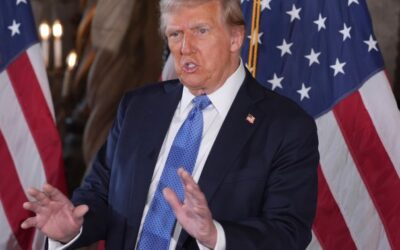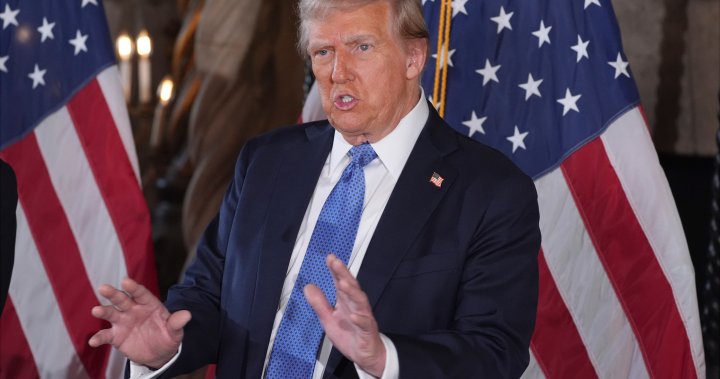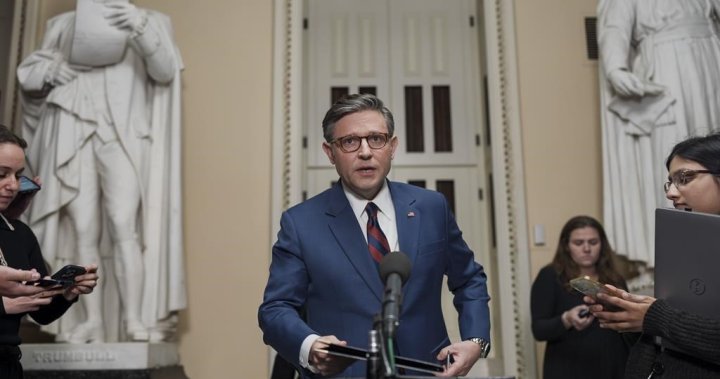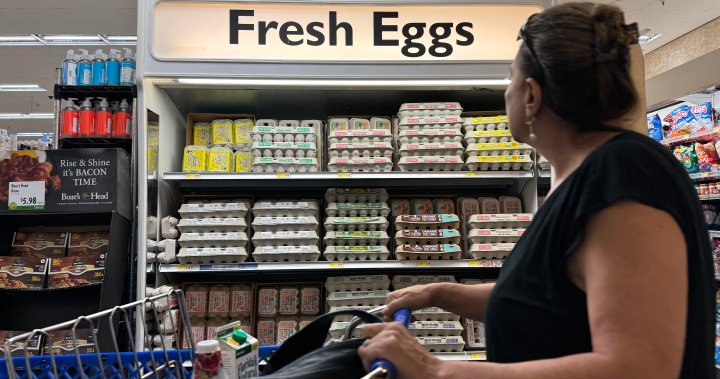As U.S. election polls show tight race, ‘take a breath,’ experts say – National
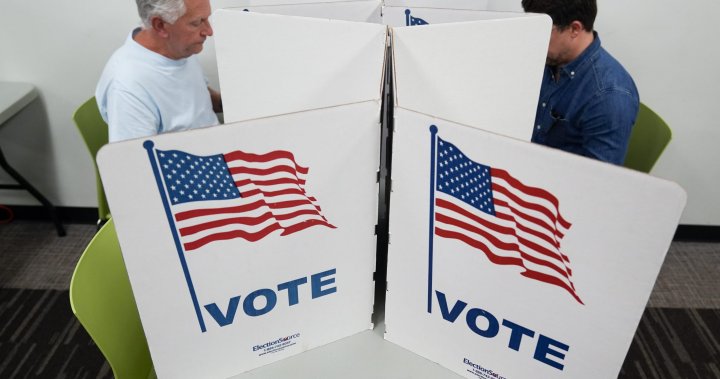
Opinion polls in the U.S. presidential election are showing an extremely close race between U.S. Vice-President Kamala Harris and Donald Trump — but polling experts say those numbers don’t always tell the whole story.
While pollsters do everything they can to present accurate pictures of how voters are feeling or intend to vote, new methodologies to adapt to modern technology and changing behaviour means the job has gotten more difficult in recent years.
Plus, “polls were not designed to predict the future,” said Samara Klar, a political science professor at the University of Arizona who studies political opinion and polling.
That makes it more important for people to pay less attention to individual polls, which can sometimes be outliers, and more on polling averages — and even to put less reliance on polls to determine what could happen on Nov. 5.
“Take a breath,” Klar said.
“People are completely fixated on the polling right now trying to figure out what is going to happen. But we just won’t know until (Election Day).”

For decades, polling involved surveying people over the phone and collecting their opinions.
Pollsters would use census data to target specific households and ensure the sample size they collect represents the demographics of the overall population, including age, race, income and other factors.
“Getting an election wrong (back then) was like falling out of a boat and missing the water: you would have to have done something really fundamentally incorrect,” said Darrell Bricker, CEO of Ipsos Public Affairs, a top polling firm that conducts polls for Global News and other media outlets.
Today, however, most people don’t answer their phones for polling and other marketing calls, which are often viewed as spam. A Pew Research survey found response rates for telephone surveys fell from 36 per cent in 1997 to just six per cent by 2018.

Get breaking National news
For news impacting Canada and around the world, sign up for breaking news alerts delivered directly to you when they happen.
That leaves pollsters relying on large online panels. To get people to sign up, many companies offer potential respondents perks like gift cards and other prizes.
Despite pollsters’ best efforts, this method makes it more difficult to ensure public opinion is accurately represented. Companies will then use what’s called “sample weighting” to correct any imbalances between the survey sample and the broader population.
For example, because women are statistically more likely to complete surveys than men, pollsters will weigh down women respondents to drive up male representation.

The challenge, Klar says, is that different methods exist for how to weigh samples, and which one to use is up to the individual pollster.
“Do you weigh it only by demographics, do you incorporate partisanship in there, do you weigh it by vote choice in 2020?” she said. “All of these very small choices can really change the outcome that you’re finding in surveys.”
Uncertainties in the data can inform a poll’s margin of error, which accounts for how “off” a poll could be.
Remarkably, experts and analysts agree that polls have generally gotten the outcomes of elections correct within a couple of percentage points, including in recent years.
That includes the 2016 U.S. presidential election, even though Trump surprised most of the world by winning the Electoral College over Hillary Clinton, which won him the presidency.
“The national polls said that Hillary Clinton was going to win (the popular vote) by two points, and that’s what she won by,” Bricker said.
The problem, he said, was that key battleground states like Michigan and Pennsylvania weren’t aligned with those national polls the way they may have been in past elections, and may have underestimated Trump’s support. Trump’s narrow victories in those and other swing states gave him enough electoral votes to win the White House.
Since then, pollsters have begun to focus more on those critical states that can swing the Electoral College to Democrats or Republicans, and polls have improved, Bricker said.
But he acknowledged a risk of overcorrecting for the mistakes made in 2016 in a way that may overestimate Trump’s support in the 2024 race.

That was arguably the case in the 2022 midterms, where polls predicted huge Republican wins in Congress but ended up only giving the party a narrow majority in the U.S. House of Representatives.
“It’s a lot dicier than it used to be, it’s a lot more difficult than it used to be, but that doesn’t mean that people using best efforts and best technologies can’t come up with good representations of what the outcome is going to be,” Bricker said.
As more and more individual polls are released and analyzed by voters and the media, Bricker said it’s important to remember that “no one poll” can tell the story of where a race is trending, or even how people are feeling.
Polling averages can be more accurate by collecting different polls together and allowing them to effectively balance each other out.
Together, those polls have more likely also captured a larger segment of the population.
Bricker added that no poll can account for people who only make up their mind at the last minute, however.
“We’ve seen examples all over the world where five, 10 per cent of people make up their minds in the voting booth, and that’s impossible to predict,” he said.

As the campaign enters its final days, Bricker said audiences should be skeptical of last-minute polls that show big movements one way or another away from trend lines that appear in polling averages.
Klar agreed and said any analysis of an individual poll at this late stage is “just not newsworthy” — something she said is especially true in a race that’s as close as the one between Harris and Trump.
“I think an additional challenge to pollsters, frankly, is that these elections are so close and it does make it harder to predict,” she said.
However, she added, “We would not know how close the election is if it wasn’t for the polling.”
As voter behaviours and technology continue to evolve, Bricker said pollsters will continue to keep pace and adapt their methods. Where that will end up remains to be seen — and the current election will inform that evolution.
“If we get it wrong, then we’re going to have another soul-searching moment like we did particularly in 2016,” he said.

